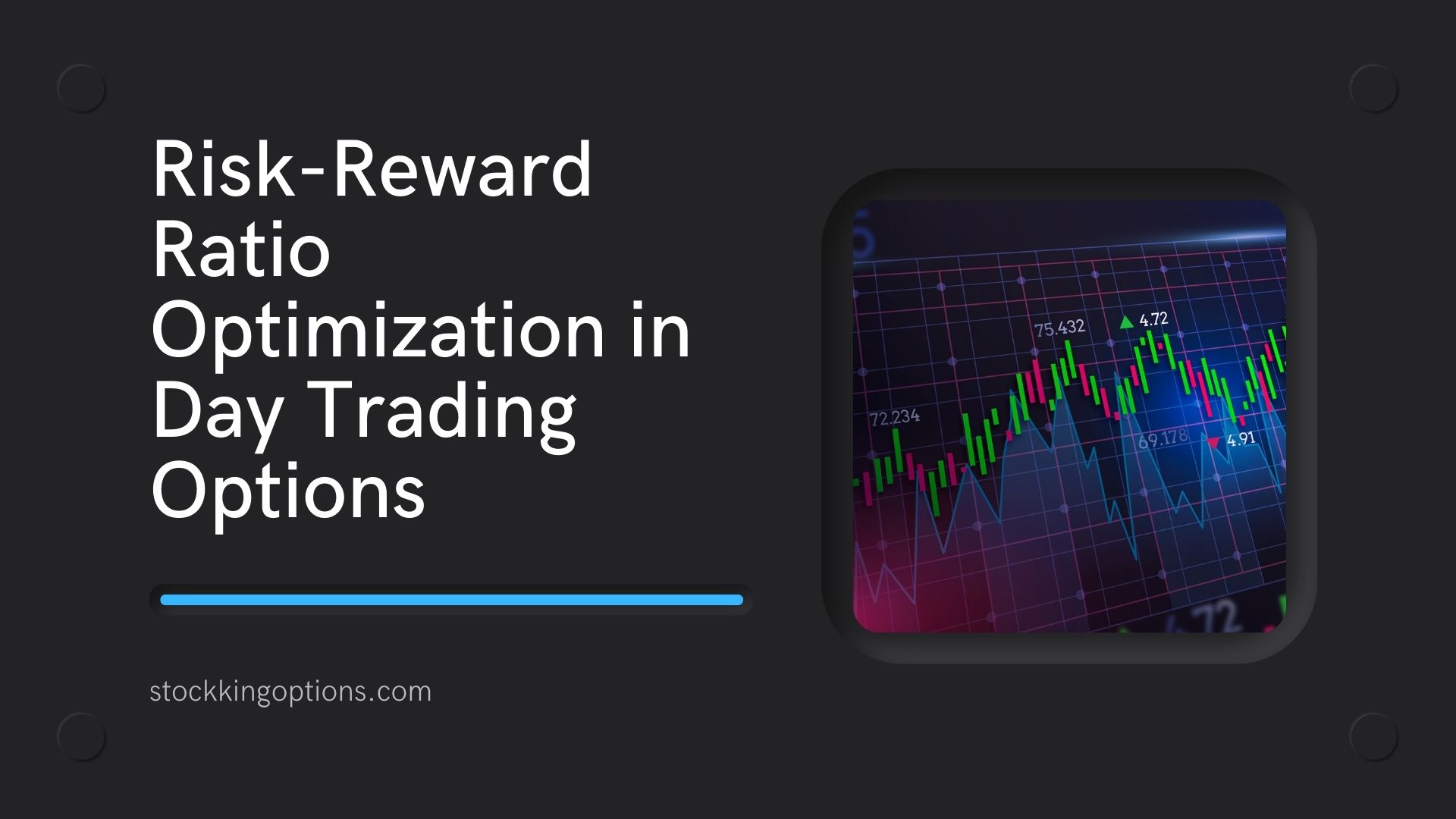
Key Takeaway: Optimizing risk-reward ratios is vital in day trading options. Balance risk tolerance with profit potential to improve trading outcomes.
In day trading options, optimizing risk-reward ratios is crucial for success. Can optimizing risk-reward ratios enhance day trading options profitability? Yes, by ensuring a favorable balance between risk and reward, traders can improve their overall trading performance.
Calculating Risk-Reward Ratios For Trades
In day trading options, calculating risk-reward ratios for trades is a critical aspect of risk management. This ratio helps traders determine the potential profit versus the potential loss on any given trade. It essentially measures the amount of risk a trader is willing to take in order to achieve a certain level of reward.
To calculate the risk-reward ratio, traders must first identify their entry and exit points for a particular trade. The entry point refers to the price at which they plan to enter the trade, while the exit point is where they plan to close it. Once these points are established, traders can then determine their stop-loss and profit targets.
The stop-loss is an essential part of calculating the risk-reward ratio as it represents the maximum amount a trader is willing to lose on a trade. This is usually set at a percentage or dollar amount based on the trader’s risk tolerance and overall trading strategy. On the other hand, profit targets are set at levels that indicate when to close out a winning position.
Once these parameters are determined, traders can then calculate their potential reward by subtracting their entry price from their profit target and multiplying it by the number of shares or contracts traded. Similarly, they can calculate their potential risk by subtracting their entry price from their stop-loss level and multiplying it by the same number of shares or contracts traded.
The resulting numbers for both potential reward and potential risk can then be used to calculate the risk-reward ratio by simply dividing them. For example, if a trader has identified an entry point at $50 per share and plans to have a stop-loss at $45 per share with a profit target set at $60 per share on 100 shares traded, then his/her calculated reward would be ($60-$50) x 100 = $1,000 while his/her calculated risk would be ($50-$45) x 100 = $500. The resulting risk-reward ratio would then be $1,000/$500 = 2:1.
It is essential to note that a favorable risk-reward ratio does not guarantee a successful trade. Traders must also consider other factors such as market conditions, volatility, and their trading strategy before executing any trades. Additionally, it is vital to continually monitor and adjust the risk-reward ratio throughout the trade’s duration to ensure that it remains suitable for the changing market conditions.
Calculating risk-reward ratios for trades is a crucial step in day trading options. By understanding this ratio and incorporating it into their risk management plan, traders can effectively minimize potential losses and maximize potential profits in their trading endeavors.
Adjusting Position Size Based On Risk Tolerance
When it comes to trading, risk tolerance is a crucial factor that should be carefully considered. It refers to the amount of risk an individual is willing and able to take on in their trades. Every trader has a different level of risk tolerance based on their personal preferences, financial situation, and experience in the market.
One of the key aspects of managing risk in day trading options is adjusting your position size according to your risk tolerance. This means determining how much capital you are comfortable risking on each trade and adjusting your position size accordingly. In this section, we will discuss why adjusting position size based on risk tolerance is important and how it can be done effectively.
Why Adjusting Position Size Is Important:
The main reason for adjusting position size based on risk tolerance is to protect yourself from potential losses. By taking into consideration your risk tolerance, you are essentially limiting the amount of money you can lose in any given trade. This not only helps prevent significant financial setbacks but also ensures that you have enough capital left to continue trading.
In addition, adapting your position size allows for better control over emotions while trading. Day trading options can be highly volatile and emotionally taxing at times, especially when large amounts of money are at stake. By sticking within your preset limits based on your risk tolerance, you can avoid making impulsive decisions driven by fear or greed.
How To Adjust Your Position Size According To Risk Tolerance:
The first step towards adjusting your position size based on risk tolerance is determining what percentage of your total capital you are willing to put at risk per trade. The general rule of thumb is to limit this percentage between 1-3%. For example, if you have $10,000 in total capital and decide to stick with a 2% risk-per-trade policy, then you would not want to lose more than $200 per trade.
Once you have established this percentage, it is important to calculate the position size accordingly. This can be done by dividing the maximum amount you are willing to risk by the potential loss per trade, which is usually determined by your stop-loss level.
For instance, if you decide to put 2% of your $10,000 capital at risk per trade with a stop-loss of $200, then your position size would be 200/0.20 = 1,000 shares/options contracts.
Adjusting position size based on risk tolerance plays a vital role in day trading options. It helps minimize losses and allows for better emotional control while trading. By determining a suitable percentage of capital to risk and calculating position size accordingly, traders can effectively manage their risk and increase their chances of success in the market.
Strategies For Maximizing Reward While Minimizing Risk
When it comes to day trading options, one of the most important aspects to consider is finding a balance between risk and reward. This means maximizing your potential gains while also minimizing potential losses. In this section, we will discuss some strategies that can help you achieve this balance and increase your chances of success in day trading options.
1. Develop a well-defined trading plan: A solid trading plan is essential for any successful trader. It should include entry and exit points, stop-loss levels, profit targets, and an overall risk-reward ratio that you are comfortable with. By having a clear plan in place, you can avoid impulsive decisions that may lead to higher risk-taking.
2. Practice proper risk management techniques: Effective risk management is crucial in day trading options as it helps minimize potential losses. One common technique is the 2% rule, which suggests not risking more than 2% of your total account balance on any single trade. This ensures that even if you have a string of losing trades, you still have enough capital to continue trading.
3. Utilize stop-loss orders: A stop-loss order allows you to set a specific price at which your position will automatically be closed if the market moves against you. This helps limit your losses and prevent them from becoming larger than expected.
4. Diversify your portfolio: It’s never wise to put all your eggs in one basket when it comes to day trading options. Diversifying your portfolio by investing in different types of options or across different industries can help mitigate risks and potentially improve your overall returns.
5. Conduct thorough research: Before entering any trade, make sure to conduct thorough research on the underlying asset or stock as well as current market trends. Knowing the fundamental and technical factors that may impact the price movement can help inform your decision-making process and reduce potential risks.




